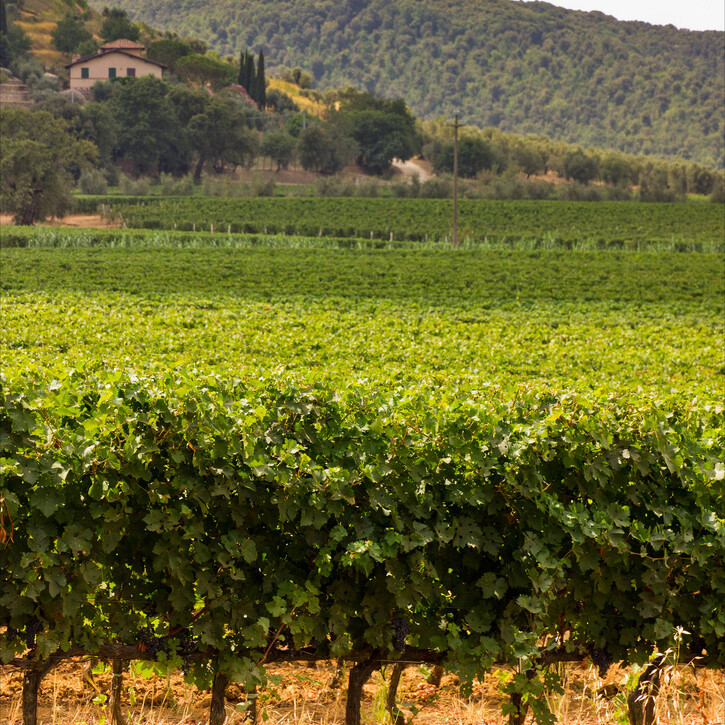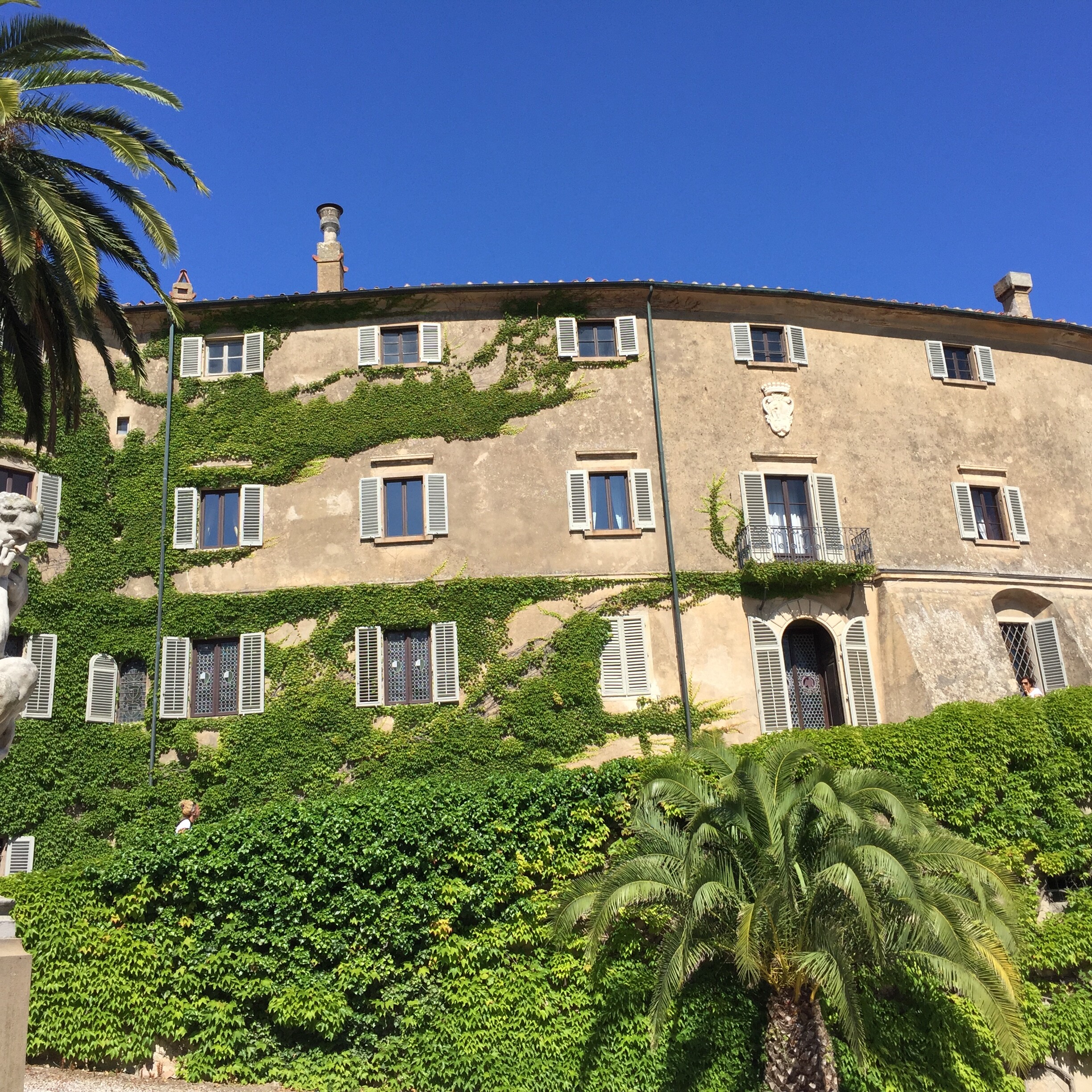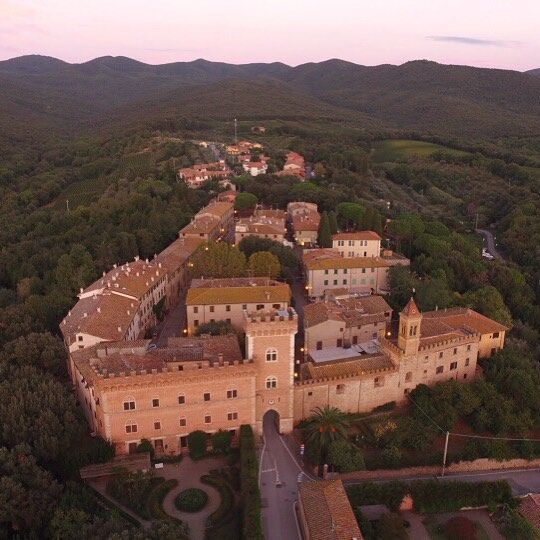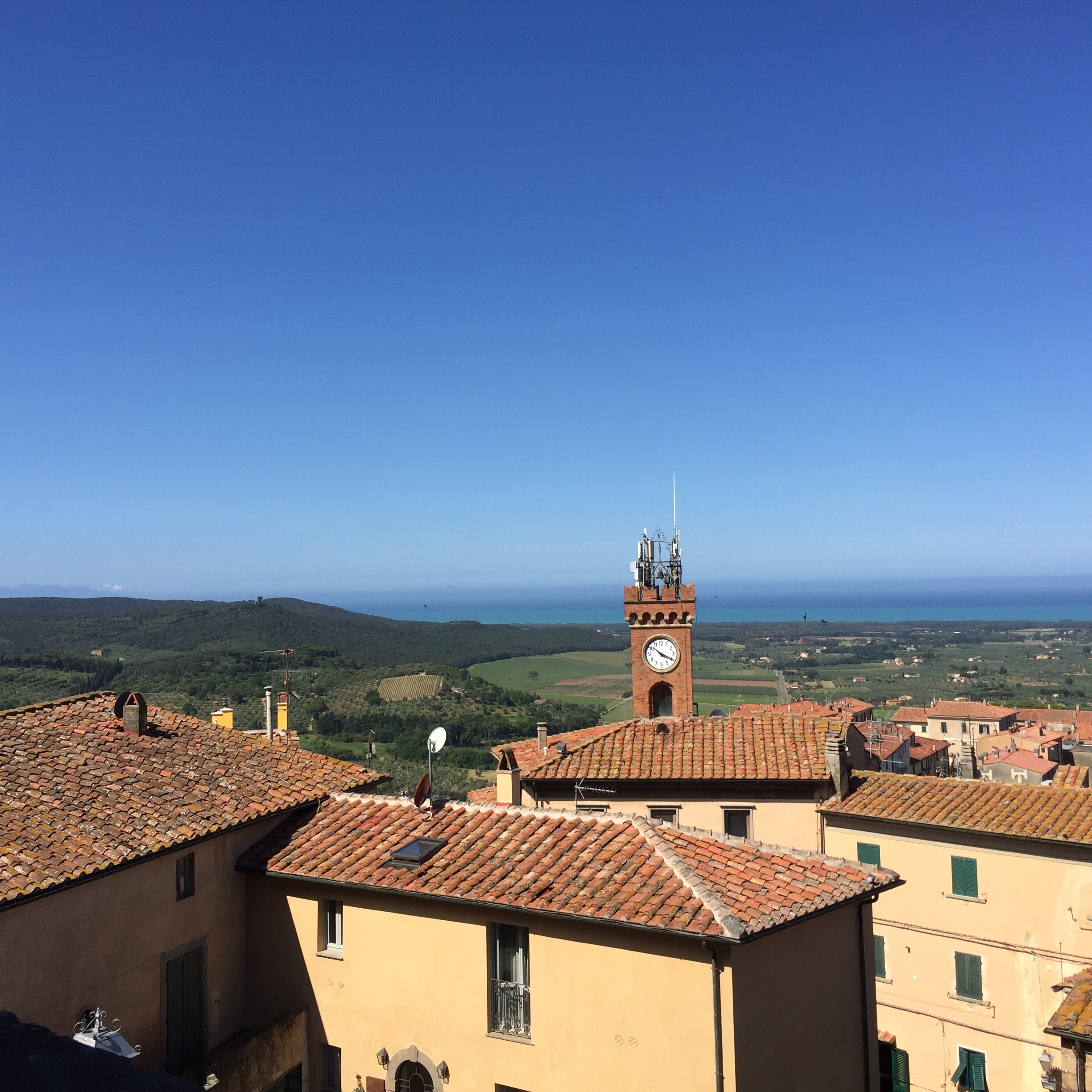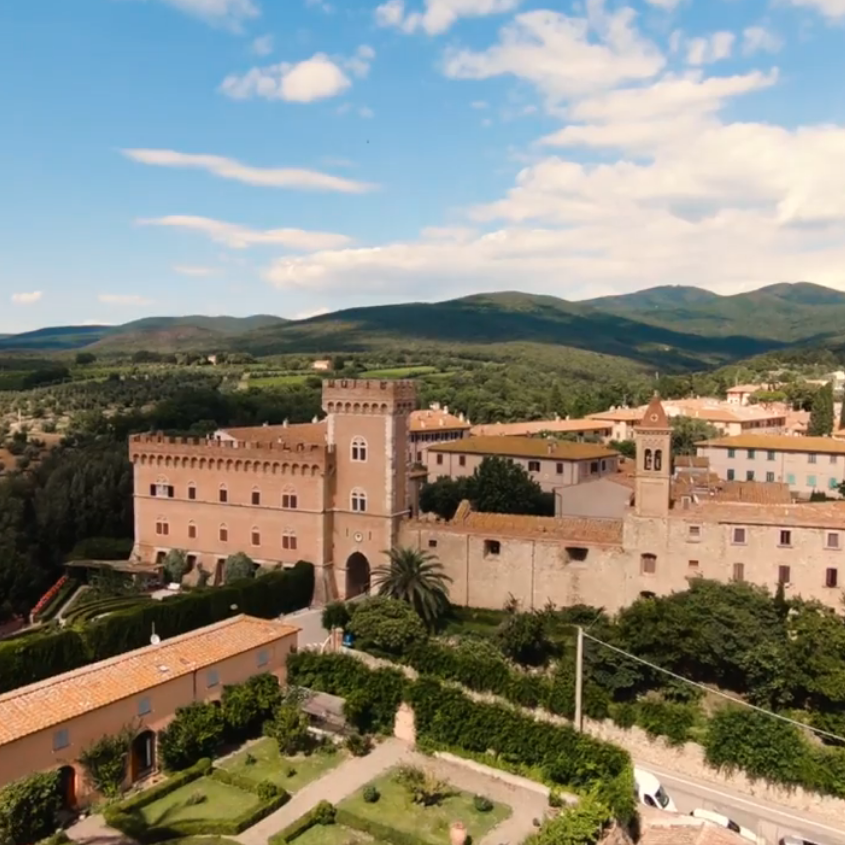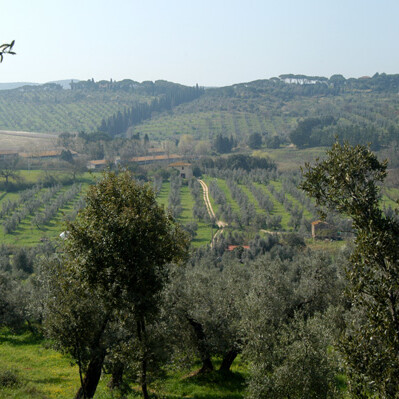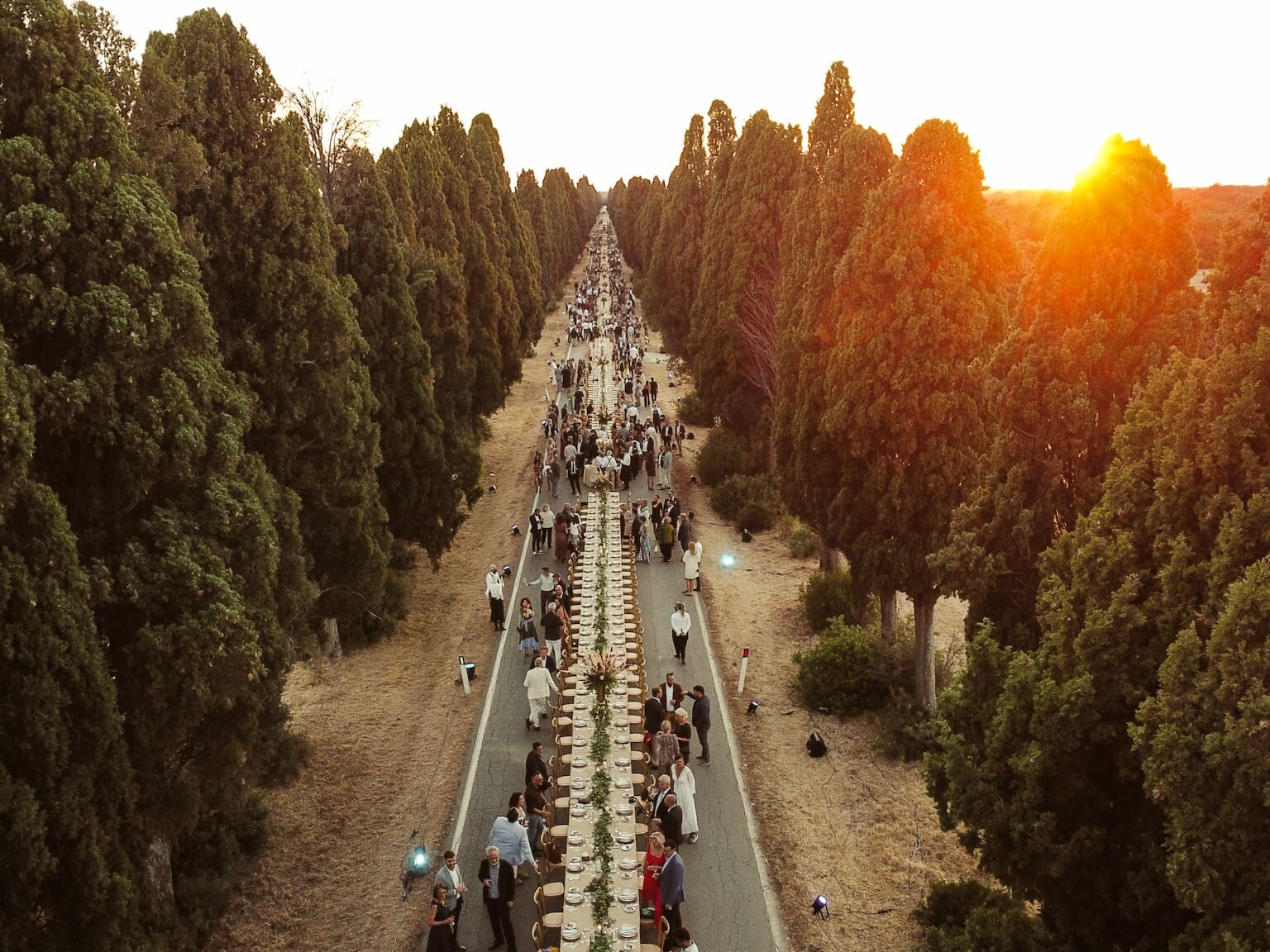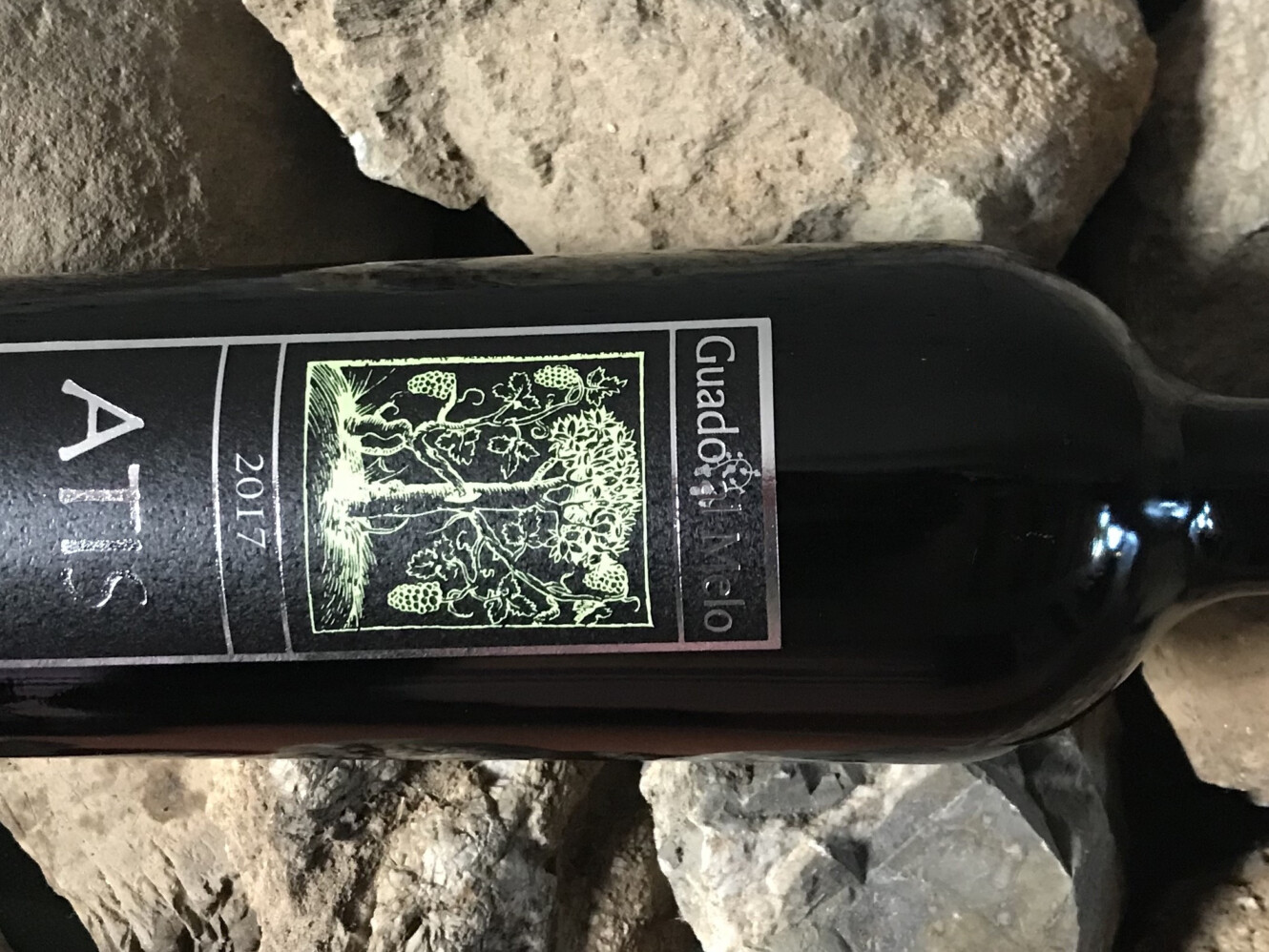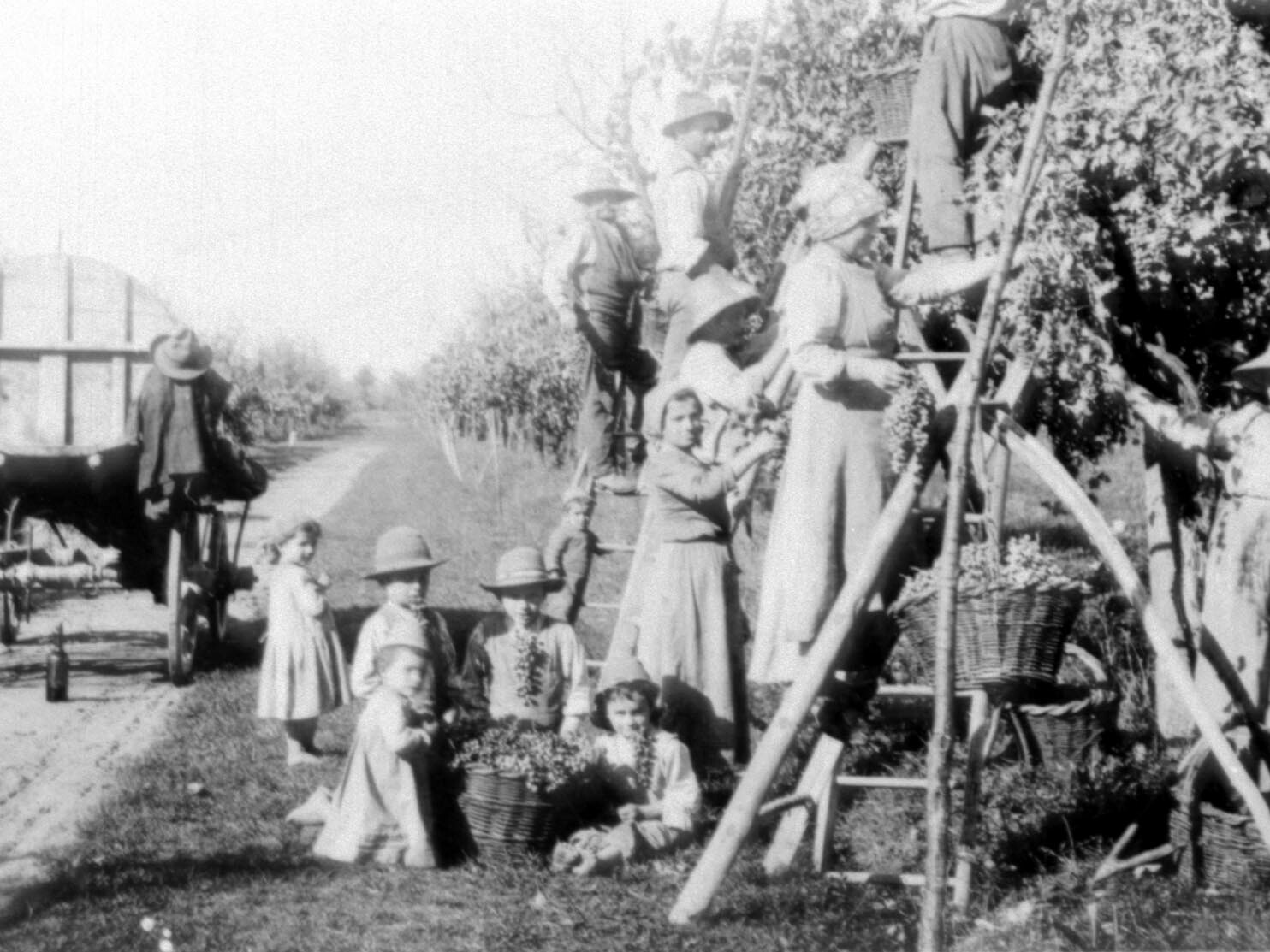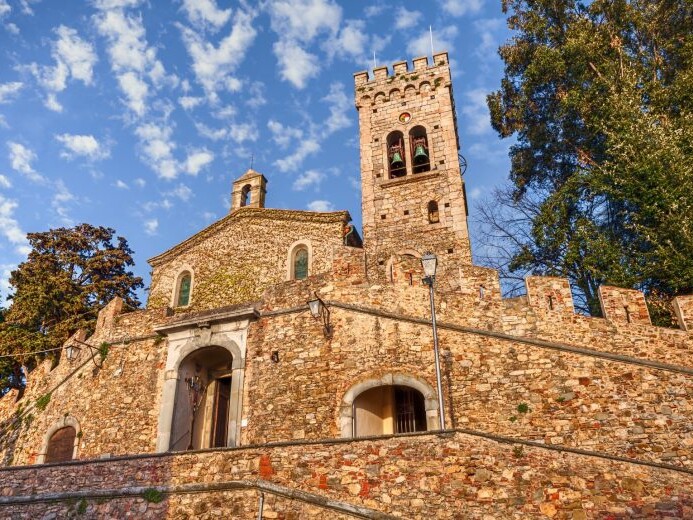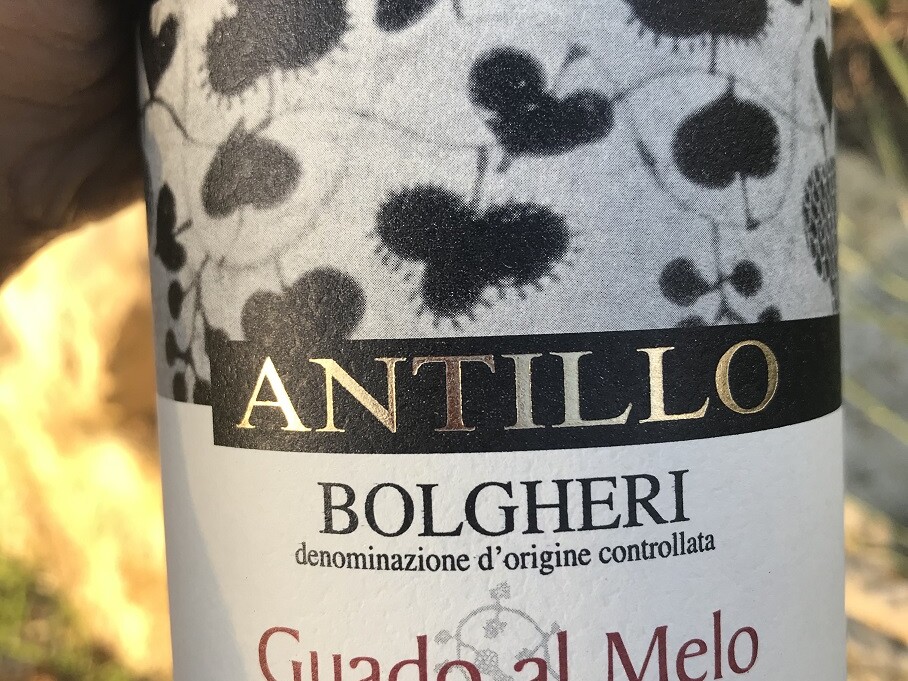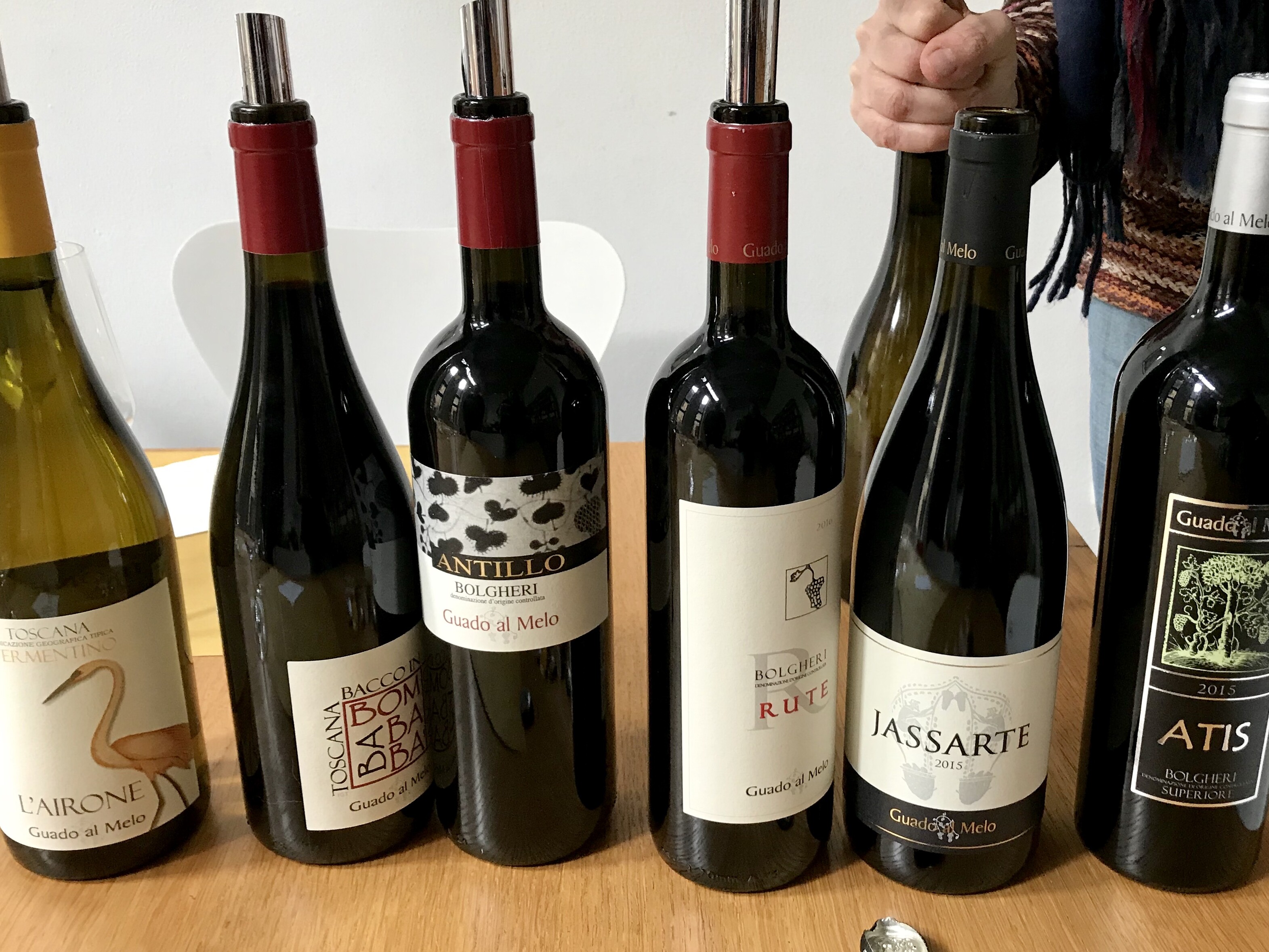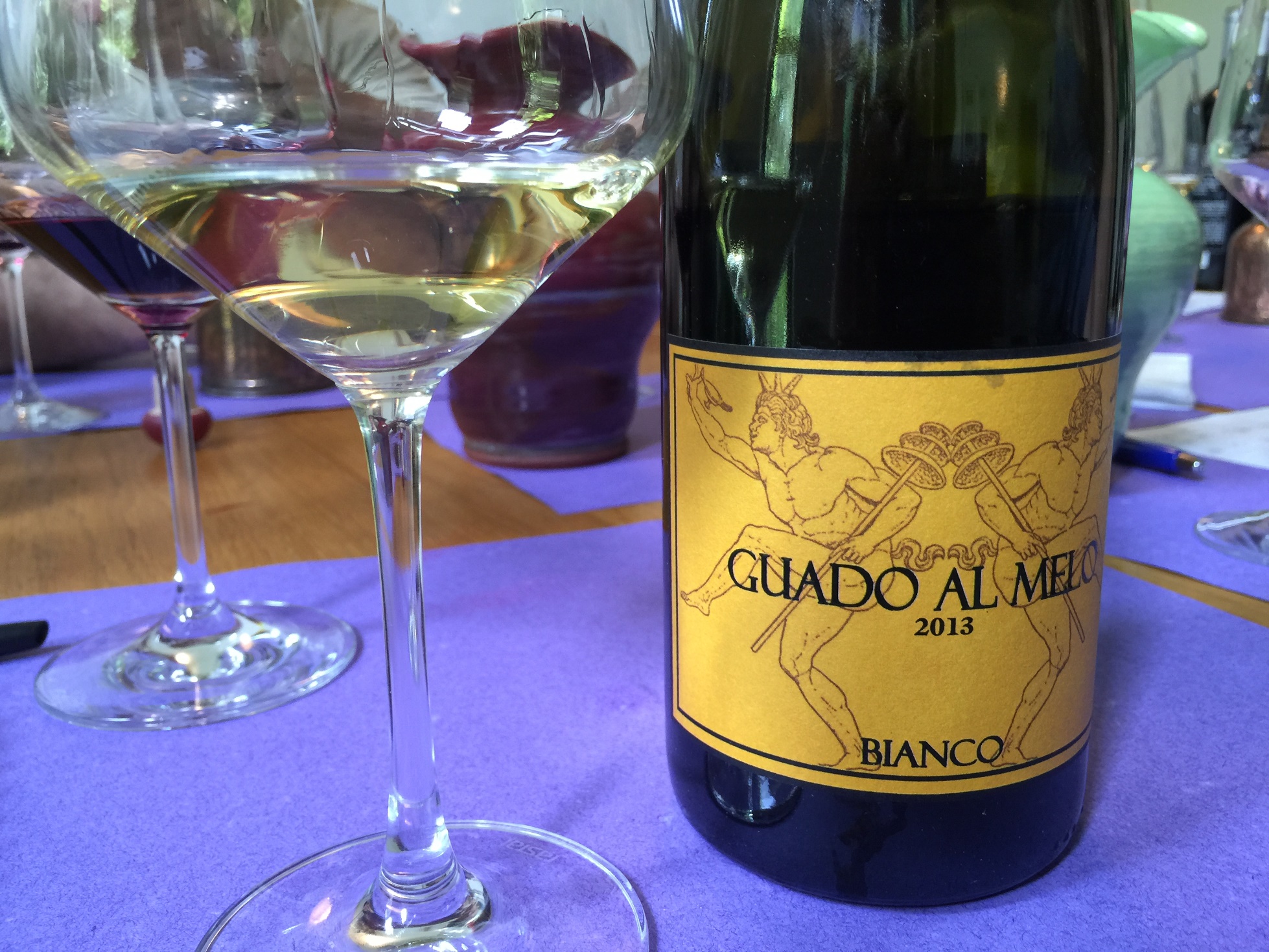The Bolgheri denomination is a small and beautiful area of just over a thousand hectares, today famed above all for the production of prestigious, long-lived red wines and elegant whites.
The wines of the Bolgheri denomination are produced in the commune of Castagneto Carducci (in the province of Livorno), on the Tuscan coast. They are named after one of the villages included in the commune’s territory, Bolgheri, well-known in Italy in the lyrics of the nineteenth-century poet Giosué Carducci.
The climate is mild Mediterranean, marine, dry and windy. It differs from the rest of the coast, with cooler average temperatures and unique soils. The hill and foothill area has varied soils (alluvial clay-sandy, clay-silt, flysch, etc.), the coolest average temperatures in the area, and the greatest summer temperature range. There are clay-sandy alluvial soils in various proportions in the higher plain, around the “Via Bolgherese”. The soils are predominantly sandy near the “Via Aurelia”. The part between the “Via Aurelia” and the sea is excluded from the DOC.
The tall straight cypresses in double row
Troop from San Guido down to Bolgheri;
Like giant striplings at a race they go
Bounding to meet and gaze once more on me.
– Giosuè Carducci, Before San Guido
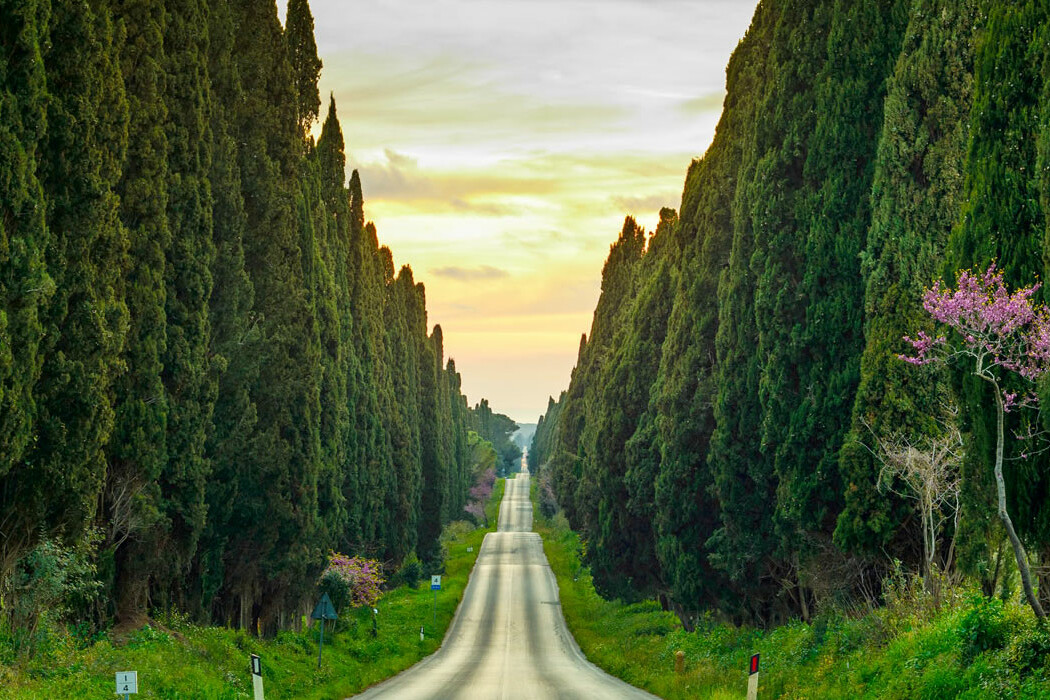
Wine has been produced since time immemorial in this area, from the first gatherers of wild grapes in the woods to the development of the Etruscan civilization, the earliest winegrowers in Italy.
Originally the only inhabited areas were the hills because the land towards the sea was marshy: this is the Tuscan North Maremma. Land reclamation, begun by the Etruscans, was expanded in Roman times. In this period, numerous “villae” farms are documented. They produced wine and olive oil in the foothills and lowland area around the Via Aurelia (where today’s farms are found).
With the decline of the Roman Empire, the abandonment of the territory resulted in the return of the coastal marshes. The population returned to the hills, where the villages of Castagneto and Bolgheri were born in the early Middle Ages, surrounded by vineyards, olive groves and vegetable gardens.
At the end of the eighteenth century the definitive reclamation of the territory began, with a significant increase in agriculture, focused particularly on wine. Over time, this reclamation led to an increasing abandonment of the hills, which, in the past, were much more densely populated than today.
From the 1920s a decline in viticulture began due to phylloxera, with the increase of olive trees and other crops. Expansion began again after World War II. In 1983 the first Bolgheri DOC was born, with the wines Bolgheri Bianco (white) and Bolgheri Rosato (Rosé).
Meanwhile, the development of fine red aging wines was expanding. In 1994 it was, therefore, decided to revise the Disciplinary Regulations, with the extension of protection to Bolgheri Rosso and Bolgheri Superiore wines. Between 1993 and 2004, viticultural zoning studies of the territory were conducted, coordinated by Professor Attilio Scienza.
Insights
A fairytale dinner for the Bolgheri DiVino event
7 September 2021
Webinar domani con Michele Scienza
14 February 2021
The harsh and wild Maremma of Bolgheri and Castagneto
12 December 2020
New vintages, tasting notes
21 February 2019
